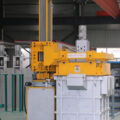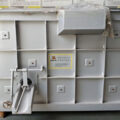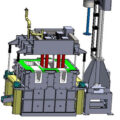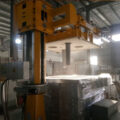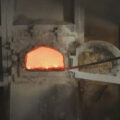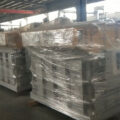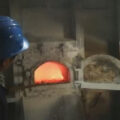The primary purpose of degassing in casting is to remove hydrogen from molten aluminum. During the degassing in casting process, other harmful substances such as chemical inclusions or alkaline substances can be removed. AdTech offers the degassing unit for aluminum, it is installed between furnace and casting equipment. The online degassing unit has dual functions: processing and heating. It serves high precision molten aluminum purification industry.
The purification process of liquid aluminum alloy is the main means to improve the comprehensive performance of aluminum alloy. In the purification treatment process, the method of mixing the purification gas and the solvent and spraying it to the aluminum melt by the rotation of the rotor is the most advanced treatment method in the world. The working principle of the rotor is: the rotating rotor breaks the nitrogen (or argon) blown into the aluminum melt into a large number of dispersed bubbles and disperses them in the molten metal. Bubbles in the melt rely on the gas partial pressure difference and the principle of surface adsorption to absorb hydrogen in the melt, adsorb oxidized slag, and be taken out of the melt surface as the bubbles rise, so that the melt can be purified. Because the bubbles are small and dispersed, they are uniformly mixed with the rotating melt, and then they rotate in a spiral shape to slowly float up. The contact time with the melt is long, and the airflow generated by continuous linear rise will not form, thereby removing the harmful hydrogen in the aluminum melt, and improving the purification effect.

Hydrogen exists in the atmosphere and is easily dissolved in molten aluminum. The inclusion of hydrogen in the molten aluminum will produce white spots or pores, which will adversely affect the final product. For example, these aluminum products may not achieve acceptable mechanical or physical properties and adversely affect tensile strength. Material fatigue cracks may also be caused by hydrogen inclusion.
Casting scrap may be caused by pinholes in the casting or machined surface, or because there is a leak when the casting is required to withstand pressure and not leak. During round ingot processing, pores may foam in forged products, extruded products, thin plates and thick plates. The poor surface properties of the material, such as peeling during casting and blistering during heat treatment, also indicate the presence of hydrogen.
The solubility of hydrogen in liquid aluminum is about 20 times higher than in solid aluminum. Due to the difference in solubility, during the curing process, hydrogen tends to escape from the solution, or diffuse slowly, or quickly form bubbles to produce hydrogen molecules. When the hydrogen pressure is greater than the surface tension and hydrostatic pressure, bubbles are formed.
In this way, if the hydrogen content in the molten aluminum is high during the solidification process, the hydrogen will exist in the form of solid solution, pores or breakpoints. Therefore, if you want to obtain high-quality castings, it is important to control the hydrogen content at a low level.
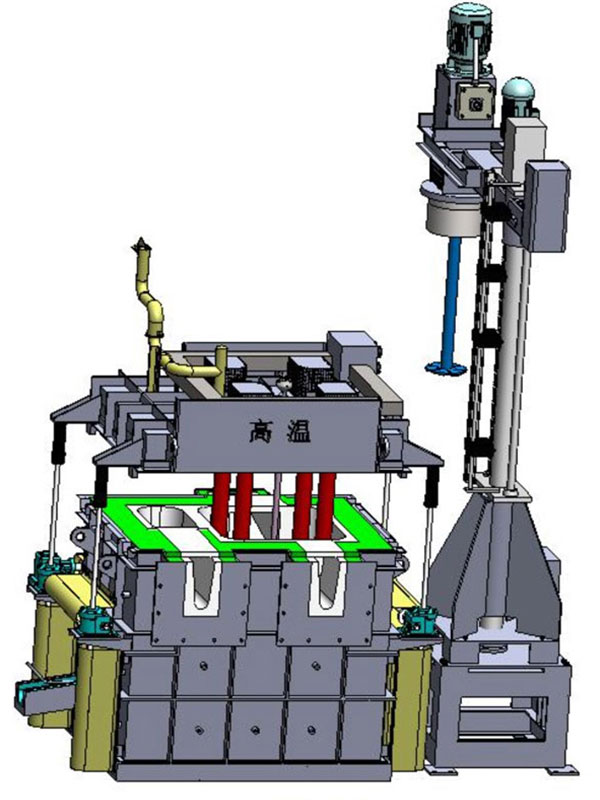
Inclusions are solid, liquid or gaseous foreign objects surrounded by aluminum. Metal and non-metallic inclusions should be removed because they may also damage the mechanical properties of the product. When machining and polishing, inclusions will increase tool wear.
Inclusions and oxide films are formed during melting or introduced as surface oxides on the added material. Because they have a different density than molten aluminum, if the holding time is extended, they will eventually rise to the surface or settle out. However, the time required for this separation is too long for most production processes. The degassing in casting process increases the speed of the inclusions on the floating liquid surface, thus accelerating the completion of this process. Ceramic foam filter filtering before casting is also a way to remove inclusions.

